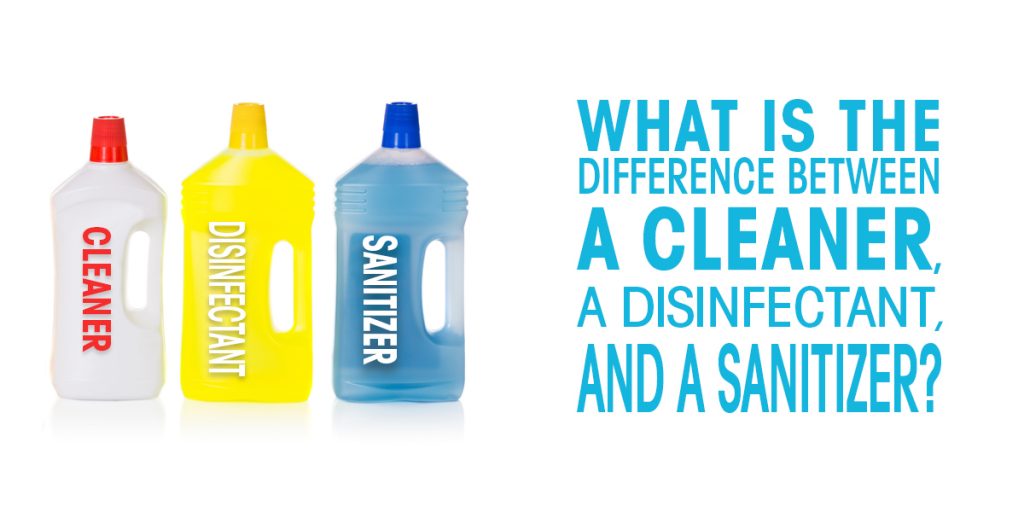What is the difference between a cleaner, a sanitizer and a disinfectant?

There seems to be some confusion and a lot of misuse between the words cleaner, sanitizer and disinfectant. To confuse matters even more, some products are often called by a combination of at least 2 of words, such as a Disinfectant Cleaner. So let us try to make sense of all this for you.
So what is the difference between these three categories of products? And which one should be used for which application?
In short, sanitizers reduce bacteria on a surface by at least 99.9%. Disinfectants kill a wider range of microorganisms (than sanitizers), and cleaners simply remove dirt, soils, and impurities from surfaces. Got it?
The above is a simple explanation. However, there is a bit more to it. So here is the longer explanation:
EPA Certification
In the US, sanitizers and disinfectants are regulated by the Environmental Protection Agency (EPA) and therefore, must be certified through a process that tests them to meet certain pre-defined criteria. By law, a chemical product cannot be labeled as a sanitizer or a disinfectant unless and until it is EPA-certified.
Germ Specificity
Both sanitizers and disinfectants must be tested against specific germs. Chemical labels must list out each and these germs individually. One disinfectant could kill germs X and Y while another disinfectant might kill germs Y and Z. It is important to understand that a single sanitizer or disinfectant will not kill all microorganisms, and to know which germs your products work against. Sanitizers are certified for bacteria only, while disinfectants can also be certified to kill viruses, mold, mildew, and fungi.
Time to Kill
The time it takes to kill germs is one more factor that is important when evaluating both sanitizers and disinfectants, and this must also be listed on the product’s label. Some chemical formulas kill respective germs in 5 minutes and others in just one minute or less. This is called “dwell time” and should be taken into account when choosing and using sanitizers and disinfectants for various applications.
Cleaners Remove Dirt
Cleaners are simple and straightforward. They represent a broad category of products that use soap or detergents to physically remove dirt and soil from surfaces. Cleaning does not kill germs. It simply removes them. The EPA does not test or regulate cleaners for effectiveness. That being said there are definitely different qualities and strengths of cleaners.
The FloraLife® Cleaner Products
Both FloraLife® D.C.D.® and FloraLife® MicroBLOC® are effective EPA-registered antimicrobial cleaners. Both products have the same effect: disinfectant, cleaner, sanitizer, bactericide, virucide, fungicide, mildewstat and deodorizer of hard, non-porous surfaces such as but not limited to walls, floors, ceilings, shelves, packing areas, garbage pails, benches and countertops. For a list of organisms they remove or kill, read their labels. However, they both meet the EPA criteria for use against SARS-CoV-2, the novel Coronavirus. See EPA list N. As far as the “time to kill” is concerned, it depends on the product and application. Follow label directions of use. And finally, the difference between the 2 products is not only their formulation, but also FloraLife® MicroBLOC® is more concentrated. However, FloraLife® D.C.D.® has an added detergent for better cleaning performance.
For more information, check FloraLifeCleaners.com. Happy cleaning… huh sanitizing… huh disinfecting…!
*products are only available in North America
